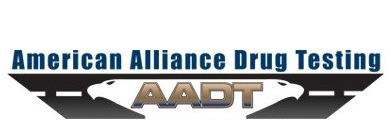Bill Introduced in Each House to Allow DOT to Accept Driver Drug Tests by Hair Sample
Both chambers of Congress recently introduced a similar bill that would allow trucking companies the option to drug test their drivers via hair (or hair follicle) sample rather than urine sample to satisfy federal drug testing requirements. The bill, the Drug Free Commercial Driver Act of 2015, (S.806 and H.R. 1467), has been introduced in Congress several times in recent years. This year it is sponsored in the Senate by Sens. John Boozman (R-Ark.), Joe Manchin (D-W.Va.) and Heidi Heitkamp (D-N.D.). The House bill is sponsored by Rep. Rick Crawford (R-Ark.), Del. Eleanor Holmes Norton (D-D.C.) and Rep. Dan Lipinski (D-Ill.).
The Drug Free Commercial Trucking Act of 2015 would instruct the DOT “to recognize hair-testing as alternative option to give companies greater flexibility when conducting drug and alcohol testing.” The bills seek to rectify the current “double-testing” predicament truck fleets find themselves in when it comes to driver drug and alcohol tests.
In 2006, following two separate fatal accidents where drivers who had tested negative in normal random urine testing, were found to be on cocaine with post-accident tests. J.B. Hunt safety management decided that they were going to also hair test all safety sensitive employees and during the first couple of weeks following the change in company policy, discovered that about 15% of those tested were positive. By comparison, the company’s positive rate on urine tests ranged from 1% to 1.5%. The company’s positive rate for hair testing has since dropped to 4%, much better but still much higher than urine tests.
Since then major trucking fleets such as Schneider National, C.R. England and Gordon Trucking have joined J.B. Hunt in adopting hair testing. These carriers, along with the American Trucking Associations (ATA), are pushing to have hair testing added to the list of federally accepted tests maintained by The Department of Health and Human Services.
The American Trucking Associations and these large members in recent years used info pieces such as this: Hair Testing to Detect Illegal Drugs, arguing using hair samples detects drug use from the previous several months, whereas urine tests generally only indicate drug use from recent days or weeks. Hair samples are also more difficult to tamper with, advocates argue. ATA president and CEO Bill Graves said, “Hair testing, which research and experience shows can be much more effective than current, conventional sampling and testing methods, is the next logical step in this process.”
Clearly, carriers like J.B. Hunt and these others who have been lobbying for this, after eight years, are likely to see their efforts finally pay-off although some within ODAPC at rather high levels aren’t as optimistic. Currently, there are approximately 5 million DOT-regulated safety-sensitive employees that are subject to DOT drug and alcohol testing program. These include approximately 3.9 million employees regulated by the Federal Motor Carrier Safety Administration (FMCSA) meaning motor carriers and their employees.



